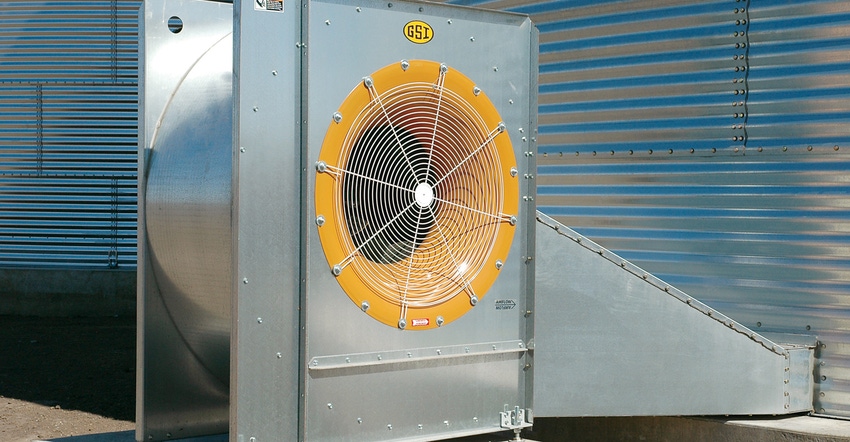
How many fans should you have on a grain bin, and how big should they be? Gary Woodruff says this depends somewhat on the size and height of the bin. However, if you are only using the bin to aerate grain that entered at the proper moisture for long-term storage, the answer may be different than you expect.
“There has been a trend to put more fans and fans with bigger motors on storage bins, and it’s not necessary,” says Woodruff, GSI district manager and grain storage expert. “In fact, in some cases, it may be counterproductive. You may create more problems instead.”
To understand why Woodruff says this, it’s important to understand some basics. Here’s an exclusive interview with Woodruff that explains the logic behind his theory that smaller fans can still do a good job on storage bins:
Why do some people believe it’s necessary to have big fans or multiple fans on storage bins? There is now a big misconception that higher aeration levels can protect grain. That’s simply not true. The moisture level and temperature of the grain are overriding factors in safe storage. Airflow above the aeration level of ¼ cubic foot per minute per bushel, but less than drying level airflow at 1 cfm per bushel, provides no higher safety level. In fact, if static pressure goes over 6 inches, the heat of pressurization will be high enough to be counterproductive.
Can you explain the concept of static pressure? Here’s an analogy that might help: Most people have an air compressor around the shop. When the motor runs and fills the tank with air, you don’t want to grab the line leading off from the compressor. Why? Because it gets hot. Generating air produces static pressure, which also produces heat. The same thing happens with a fan on a bin. You produce static pressure, which means you also produce heat.
How can heat produced by aeration fans be counterproductive? If you have a larger or more powerful fan than you need and force lots of air into the grain mass quickly, you’re also introducing lots of heat. In some cases, it can raise the grain temperature by 10 degrees F.
I’ve run across many bins in recent years where grain in the bottom three rings was very dry, with no spoilage. Then in the middle rings, you might have 6 inches of spoiled grain around the outside inner edges. The top rings would be fine. My explanation is that warmer grain in the middle meets the colder bin wall, causing condensation and spoilage on the wall. Put a smaller-horsepower motor on the fan, or block off one fan if there are two, and you can likely eliminate the problem.
So, aeration of dry grain should just be about changing grain temperature as seasons change? Yes, and you don’t need large, powerful fans for it. Temperature can be changed with low aeration levels. Whether it takes 56 hours at ⅓ cfm per bushel, 128 hours at 1/10 cfm, or 200 hours at 1/20 cfm to reduce grain temperature of the entire bin makes little difference in grain storage life.
About the Author(s)
You May Also Like




